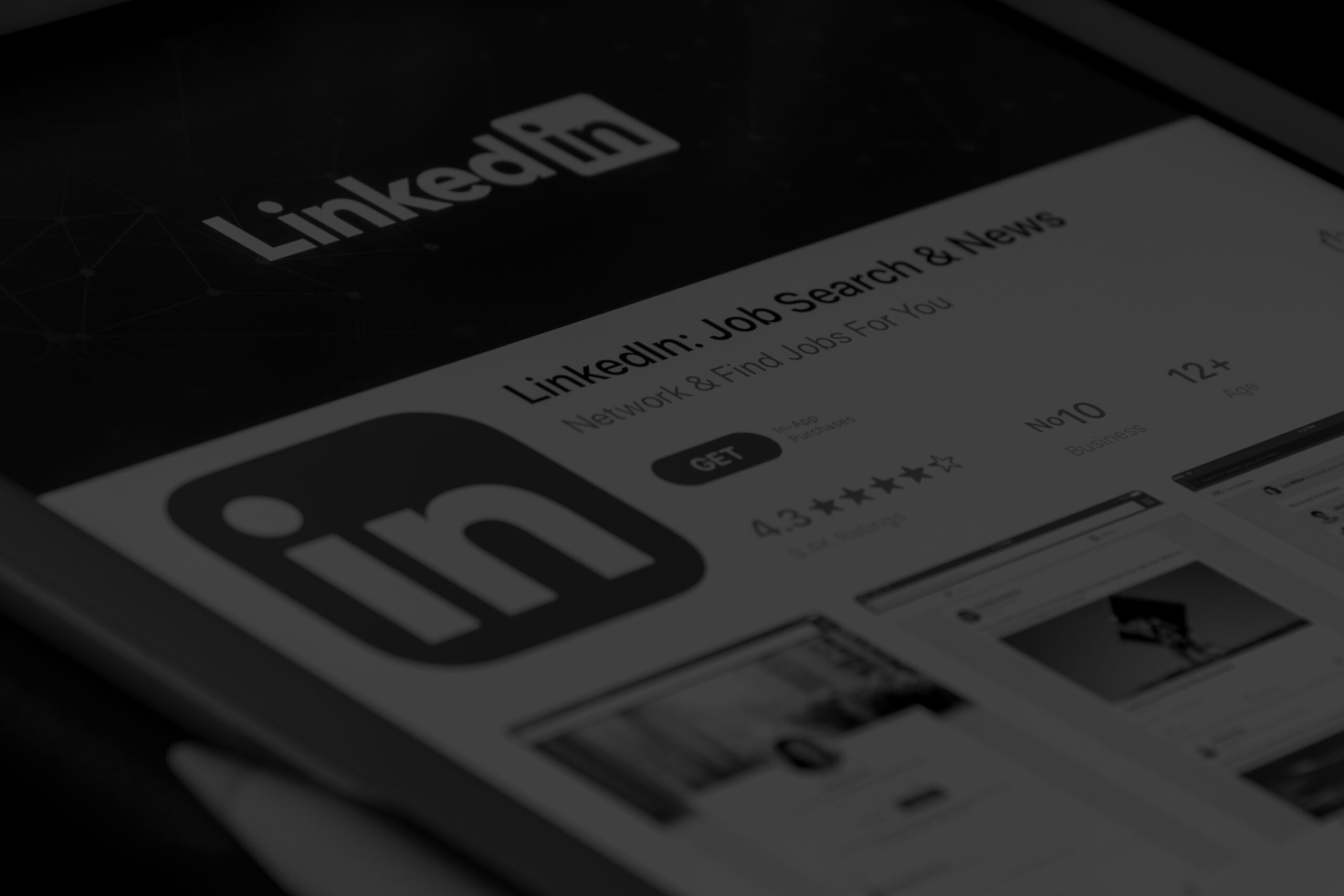Biotech is an industry where innovation doesn’t sell itself. Long development cycles, strict regulatory oversight, and audiences who demand scientific proof over marketing claims create a landscape where credibility matters far more than promotion. Buyers, researchers, and investors evaluate the mechanisms of action, data quality, and the reputation of the team behind the work before considering a partnership.
This makes biotech marketing fundamentally distinct from SaaS or traditional B2B marketing. Messaging must withstand scientific scrutiny. Content must be accurate, concise, and grounded in evidence. And every channel, from publications to digital visibility, has to help complex ideas become understandable and trustworthy.
Even as digital platforms and AI-driven search shape how early discovery happens, biotech still relies heavily on relationships. Networking, industry events, and consistent reputation-building remain irreplaceable because so many opportunities emerge through trust-based conversations.
This article breaks down the strategies that help biotech companies earn that trust — from positioning and evidence marketing to digital visibility, partnerships, and ecosystem presence — and how each one contributes to sustainable growth.
Core Focus Areas for Biotech Marketing in 2026
Biotech marketing only works when the foundational pieces are in place. These core areas shape how buyers perceive your credibility, understand your science, and move from first contact to serious evaluation.
- Branding
Biotech branding is about credibility, not decoration. A clear visual identity, consistent scientific language, and unified presentation of your technology help researchers and investors recognize you quickly and trust what they’re looking at.
- Web Experience
Your website must function like a technical reference hub. Researchers judge you instantly based on how easily they can find mechanisms of action, validation data, workflows, regulatory notes, and product clarity.
- SEO & Content Marketing
Biotech audiences search for precise concepts, not broad topics. Strong SEO depends on structured, factual content: MOA explainers, workflow pages, comparison insights, and clearly authored technical narratives that both humans and AI can understand.
- Paid Media/PPC
Scientific audiences are niche but intent-driven. Targeted campaigns around assays, methods, instrumentation, and problem-specific keywords allow you to meet stakeholders exactly when they begin evaluating solutions.
- Social Media
Biotech social presence is about authority. LinkedIn, X, and YouTube help you share updates, show your science, and remain visible in professional circles where perception is shaped long before a purchase conversation begins.
Digital Strategies That Drive Biotech Growth in 2026
Digital channels shape the first impression biotech buyers form long before anyone fills out a form or speaks to sales. Researchers, clinical teams, and investors evaluate you through your scientific clarity, data transparency, and how easily they can understand your technology online.
Deloitte’s 2025 Life Sciences Outlook notes that digital transformation remains a major focus across the industry, driven by advancements in cloud technologies, generative AI, and a broader push to modernize how scientific information is delivered and evaluated.
The following strategies focus on what consistently motivates technical audiences to trust and engage.
Build SEO and AI-Search Visibility Through Scientific Structure
Biotech SEO is effective when your website functions like a scientific resource, rather than a marketing site. Technical buyers seek precise concepts, including assays, biomarkers, workflows, method comparisons, regulatory details, or specific platform capabilities.
To support this, your website needs content that explains the science clearly and consistently.
Key elements include:
- Topic clusters around your core domains (platform, modality, assay type, disease area).
- Dedicated pages for mechanisms of action, protocols, workflows, and use cases.
- Structured data and clear authorship to strengthen both SEO and AEO/GEO signals.
- Definitions, short fact blocks, visual diagrams, and comparison tables that AI systems can easily parse.
This approach makes it easier for researchers, procurement teams, and AI assistants to understand what you do — and why it matters.
Capture Intent With PPC and Paid Social
Paid campaigns in biotech require precision. Search volume is often low, but intent is extremely high. Success depends on targeting the exact queries, fields, and roles that signal evaluation-level interest.
Effective paid targeting includes:
- Keyword groups focused on specific assays, workflows, instrumentation, and scientific methods.
- LinkedIn targeting by research field, seniority, tools used, or scientific interest areas.
- Retargeting users who visited scientific content (protocol pages, MOA explainers, comparison charts).
- Select placements on scientific platforms where researchers actively engage.
The goal isn’t broader reach — it’s reaching the right people at the right evaluation moment.
Use Email as the Backbone for Long, Evidence-Heavy Nurturing
Biotech buyers rarely convert quickly. They need data, internal consensus, and validation. Email supports this long journey better than any other channel.
Strong biotech email systems include:
- Segmented sequences for R&D, QA, clinical, BD, and procurement teams.
- Data-driven updates: new results, workflow improvements, benchmarks, webinars.
- Post-event sequences that continue conversations from conferences or demos.
- Quarterly scientific summaries that help stakeholders justify your solution internally.
Email works when it consistently reduces uncertainty and reinforces credibility.
Build Content That Reduces Scientific and Operational Risk
Biotech content has one job: make complex science clear and trustworthy. Buyers don’t need inspiration — they need confidence.
High-performing content formats include:
- MOA animations and step-by-step schematics.
- Protocol explainers and workflow illustrations.
- White papers grounded in real data or partner-supported studies.
- Regulatory pathway content and validation evidence.
- Technology comparison sheets with clear performance metrics.
- A searchable evidence library with charts, datasets, and peer-reviewed references.
This content becomes the backbone of every digital channel — SEO, PPC, email, and sales enablement.
Use Social Media to Build Authority, Not Reach
Biotech audiences don’t care about volume; they care about expertise. Social media works when it reinforces scientific clarity and progress.
Recommended channel roles:
- LinkedIn for thought leadership, hiring visibility, scientific updates, and investor interest.
- X (Twitter) for real-time scientific commentary, publication sharing, and peer engagement.
- YouTube for MOA videos, technology explainers, lab walkthroughs, and webinars.
Posting daily isn’t necessary. What matters is consistent, credible contributions.
Strengthen Digital Reputation to Reduce Buyer Hesitation
Biotech buyers are inherently risk-averse. Digital trust signals help them evaluate whether your solution is credible, scalable, and safe to adopt.
Strong reputation indicators include:
- Collaborations and partnerships with universities, CROs, CDMOs, and labs.
- Peer-reviewed publications, posters, or abstracts.
- Advisory boards or KOL involvement.
- Industry awards or recognitions.
- Media coverage in respected scientific or business outlets.
Every signal reduces the perceived risk of adopting your technology.
Offline Strategies That Support Biotech Growth
Digital reach is essential, but biotech still depends heavily on personal credibility and scientific relationships. Researchers, clinical teams, and investors make decisions through people they trust and evidence they see firsthand. Offline channels reinforce digital visibility by validating your expertise and creating the conversations that move decisions forward.

Use Industry Events to Strengthen Scientific Trust
Conferences, symposia, and domain-specific meetings remain core to biotech because they provide stakeholders with a direct look at the science and the people behind it. Buyers can assess your team’s credibility, ask technical questions, and see how your technology fits within current research or clinical workflows.
Events worth prioritizing typically offer:
- Poster sessions or data showcases
- Concentrated access to researchers and technical leaders
- Opportunities to meet potential partners, CROs, and investors
- Alignment with your scientific field or modality
Consistent presence matters. Familiarity fosters trust, and trust in turn leads to collaboration.
Treat Networking as a Strategic Advantage, Not a Side Activity
Biotech decisions are influenced by the ecosystem, where researchers recommend tools, advisors advocate for platforms, clinicians share workflow experiences, and investors seek defensible science. Strong networks accelerate all of it.
Participation in scientific societies, working groups, accelerator networks, and community circles builds a reputation that digital channels alone cannot. Over time, this results in:
- More inbound conversations
- More warm introductions
- More speaking or panel opportunities
- More credibility when new data is released
Reputation compounds. The companies that show up consistently become the ones people trust.
Turn Offline Interactions Into Digital Momentum
Offline interactions become exponentially more valuable when they feed your digital presence and nurture systems.
This loop works well when you:
- Enrich contacts from events and add them to relevant nurture streams
- Trigger post-event email sequences tied to specific conversations
- Publish recaps, poster breakdowns, and behind-the-scenes highlights
- Turn recurring conference questions into new content assets
- Retarget event attendees with scientific materials afterward
This creates a seamless journey — from in-person trust to ongoing digital education — which is essential during long evaluation cycles in biotech.
Practical Playbook for Biotech Companies in 2026
This playbook distils the priorities biotech companies should focus on to build trust, generate demand, and support long, evidence-driven decisions.
- Build a strong digital foundation
Make your platform clear, structured, and scientifically coherent so visitors immediately understand your technology and can verify your claims without friction.
- Generate demand with precision targeting
Use search and social advertising to reach researchers at the exact moment they explore methods, tools, or workflows related to your domain.
- Support long evaluation cycles with smart nurturing
Biotech buying journeys are slow. Maintain momentum through segmented email sequences, technical updates, and follow-ups that help teams evaluate and justify decisions.
- Strengthen your ecosystem presence
Consistent participation in conferences, societies, and professional networks keeps your brand familiar and increases the chances of collaboration or pilot discussions.
- Use analytics to improve continuously
Track which scientific content, pathways, and roles show the strongest engagement. Refine messaging and targeting each quarter based on real behavior, not assumptions.
- Expand external validation
Publications, collaborations, advisory input, and regulatory milestones reduce perceived risk. The more external proof you accumulate, the faster prospects advance.
Conclusion
Biotech companies succeed when their marketing reflects the same precision as their science. Clear branding, structured digital ecosystems, evidence-led content, and a steady presence in the scientific community all work together to reduce uncertainty for buyers.
Teams that approach marketing as an extension of scientific communication build trust more quickly and remain in consideration for longer. Biotech companies partner with LenGreo to translate complex technology into clear value. Whether handled internally or externally, the principle remains the same: credibility compounds when every channel speaks with clarity and purpose.










